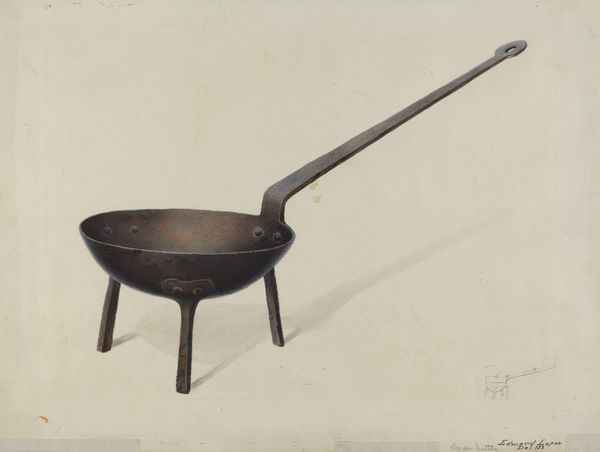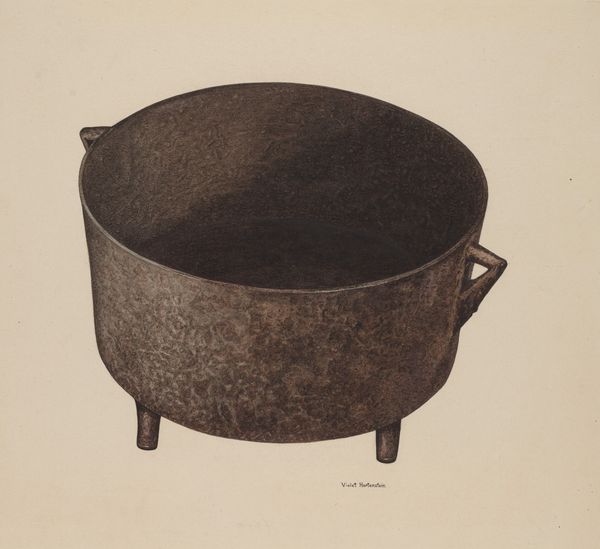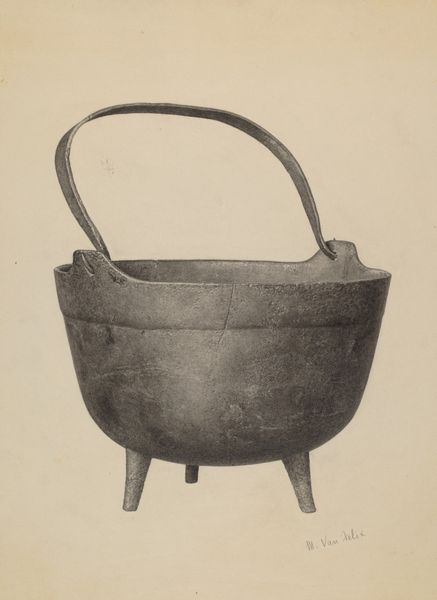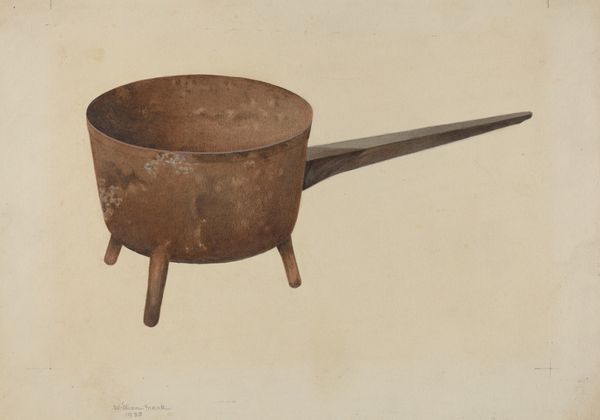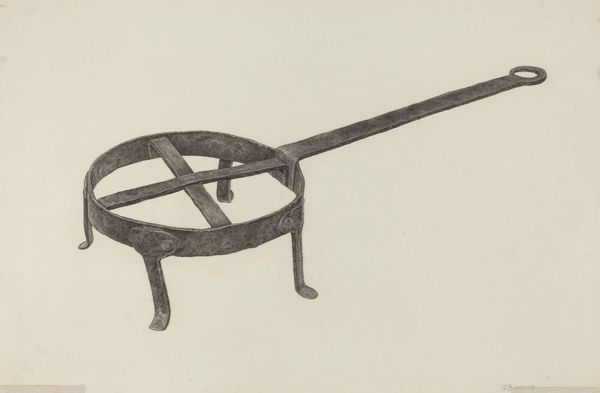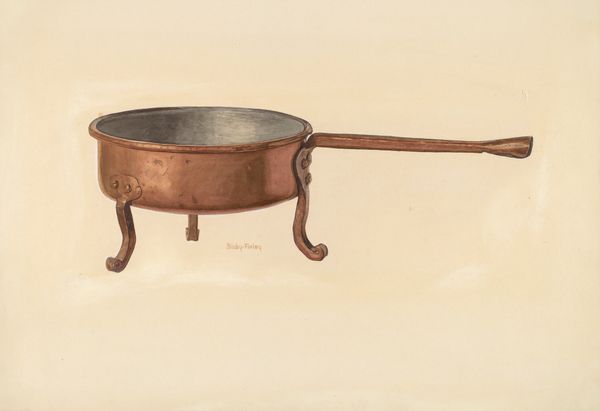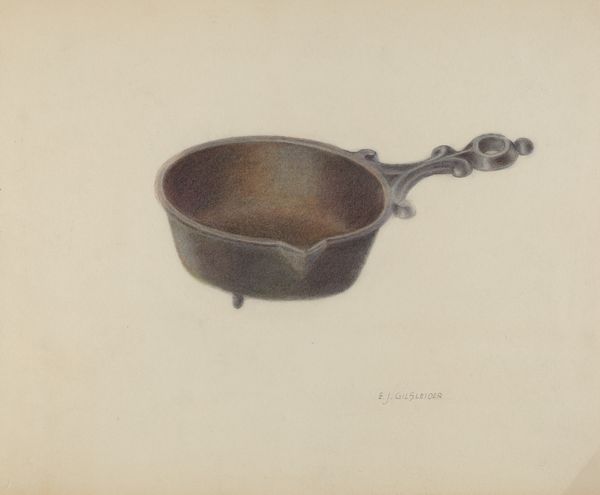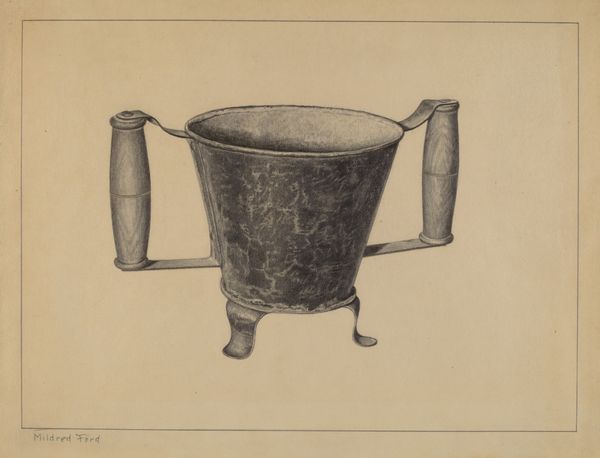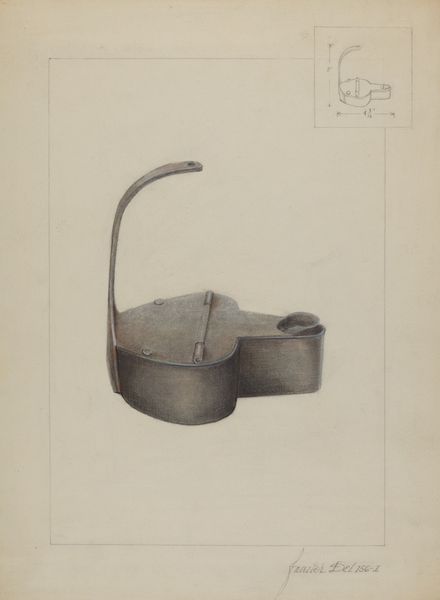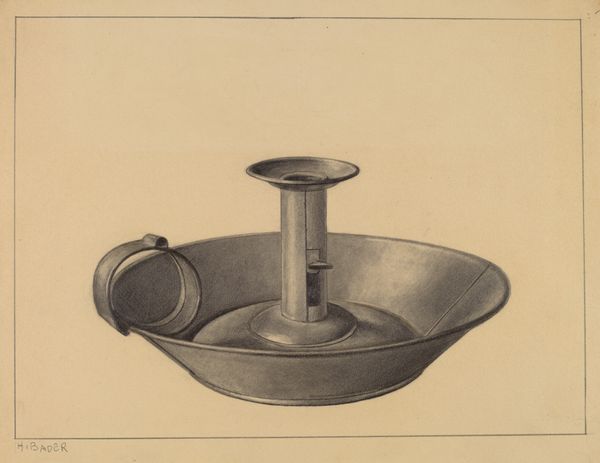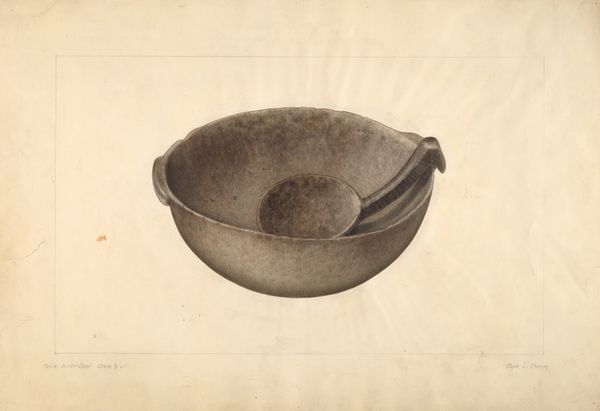
drawing, pencil
#
pencil drawn
#
drawing
#
charcoal drawing
#
pencil drawing
#
pencil
#
realism
Dimensions: overall: 29.1 x 33.9 cm (11 7/16 x 13 3/8 in.) Original IAD Object: 5 3/4" high; 7 1/8" in diameter
Copyright: National Gallery of Art: CC0 1.0
Editor: We're looking at "Skillet," a drawing by Alfred Goldstein, made around 1939, using pencil. It's a surprisingly detailed rendering of, well, a skillet! It has this almost stark simplicity to it, and the texture really pops out. What do you see in this piece, looking at it as an expert? Curator: I am drawn to the stark geometry. Observe the cylindrical legs contrasting with the semi-spherical bowl. The composition depends on these opposing forms, each meticulously rendered through precise application of graphite. Note how the handle, almost brutally linear, disrupts the gentle curve of the bowl's lip. It creates a visual tension. Editor: It's interesting how you focus on those shapes. I hadn't considered that visual tension. But is there anything to it beyond just…form? It is just a skillet, after all. Curator: The subject is secondary. While context always holds a degree of importance, it is how Goldstein meticulously balances light and shadow using only graphite which elevates the piece. Notice the artist's almost scientific approach in detailing surface variations; the gradations mimic the feel of real metal. How would you define realism here? Editor: Well, I think, he uses a high degree of accuracy and captures a realistic image with believable values. It’s fascinating to think about how something as commonplace as a skillet can be so engaging, purely based on how it’s depicted. Curator: Precisely. Goldstein prompts the viewer to consider not just *what* is depicted, but *how* it is depicted. We often forget that even everyday objects offer potential for aesthetic exploration and intricate interpretation. Editor: I guess I will start noticing mundane objects differently now, observing their individual composition more closely. Thanks for sharing your insights!
Comments
No comments
Be the first to comment and join the conversation on the ultimate creative platform.
